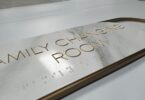What do we need to know about wayfinding signage for our hospital facility?
Hospital wayfinding signage should be highly visible, easy to read, simple to follow, accessible to everyone, and localized for people speaking various languages.
In the dynamic and often stressful environment of hospitals, wayfinding signage plays a crucial role in guiding patients, visitors, and staff through complex corridors with ease. For hospital facility managers, safety compliance officers, physical plant managers, and designers, understanding the nuances of effective wayfinding signage is key to enhancing navigation, ensuring safety, and improving overall satisfaction. Here are the top five questions about wayfinding signage for hospitals, answered comprehensively to assist in planning, implementing, or updating your signage system.
1. What makes effective wayfinding signage in hospitals?
Effective wayfinding signage in hospitals is clear, comprehensive, and consistent. It should cater to diverse users, including those with limited mobility or visual impairments. Key elements include:
- Visibility: Signs should be placed at eye level and in well-lit areas.
- Readability: Use large, legible fonts and high-contrast colors.
- Simplicity: Information should be straightforward, avoiding medical jargon.
- Accessibility: Include Braille and tactile elements for visually impaired visitors.
- Localization: Consider multilingual signs in areas with a diverse population.
2. How can hospitals ensure their wayfinding signage is ADA-compliant?
The Americans with Disabilities Act (ADA) sets forth guidelines to ensure signage is accessible to everyone. Hospitals can ensure ADA compliance by:
- Following the ADA Standards for Accessible Design for sign size, height, and placement.
- Incorporating Braille and tactile characters for identification signs.
- Ensuring that wayfinding paths are accessible to wheelchairs and other mobility aids.
For detailed guidelines, refer to the United States Access Board website or the ADA’s official site.
3. What are the best practices for updating existing wayfinding signage?
Updating wayfinding signage is essential for maintaining an efficient navigation system, especially in hospitals that undergo expansions or renovations. Best practices include:
- Conducting regular audits to identify confusing pathways or outdated signs.
- Involving a diverse group of users, including patients and healthcare workers, in the planning process.
- Integrating digital signage for dynamic updates and alerts.
- Ensuring all changes remain consistent with the existing signage system to maintain continuity.
4. How can digital wayfinding enhance hospital navigation?
Digital wayfinding can complement traditional signage by offering real-time updates, interactive maps, and personalized directions. Benefits include:
- The ability to update information quickly in response to changes within the hospital.
- Enhanced accessibility options, such as audio directions for the visually impaired.
- Reduction in printed materials, supporting environmental sustainability efforts.
Implementing digital wayfinding requires careful planning to ensure it is accessible, user-friendly, and integrated seamlessly with physical signage.
5. What role does color coding play in hospital wayfinding signage?
Color coding is a powerful tool in wayfinding signage, offering intuitive cues that help distinguish different areas and services within a hospital. When implementing color coding:
- Choose contrasting colors for clarity and visibility.
- Assign specific colors to critical areas, such as emergency departments or maternity wards.
- Use color consistently across all signage to avoid confusion.
- Consider color perception variations and color blindness when selecting your palette.
Effective wayfinding signage in hospitals is critical to facilitating navigation, enhancing safety, and ensuring a positive experience for all users. By addressing these top questions, facility managers, safety compliance officers, and designers can make informed decisions that meet the needs of their diverse user base. Remember, wayfinding signage is not just about guiding individuals through physical space; it’s about creating an environment that is welcoming, accessible, and easy to navigate.
As healthcare facilities continue to evolve, staying informed about the latest trends, technologies, and regulatory requirements in wayfinding signage will be key to maintaining a high standard of care and accessibility.
Additional Resources
For more information on ADA compliance and wayfinding signage guidelines, please visit:
These resources provide comprehensive guidelines and best practices to help ensure your hospital’s wayfinding signage system is effective, compliant, and conducive to a positive user experience.


